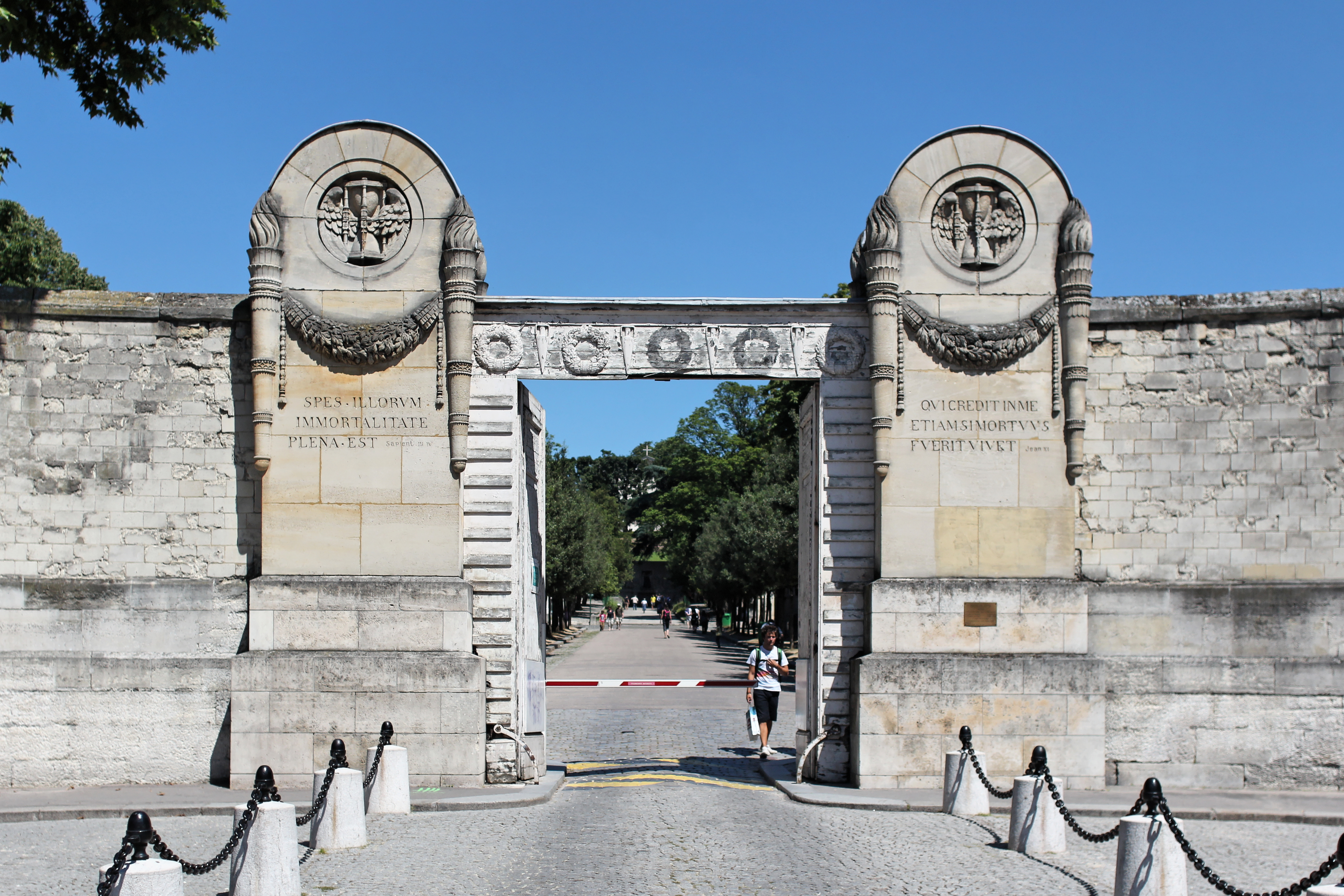We continue where we stopped in the last topic:
Tree-lined promenade
Going up the stairs in one of the avenue Daumesnil, one reaches this old viaduct converted into a beautiful park suspended (9 m above the ground), commonly known as "green corridor". The walk, away from the tourist crowds but in the company of joggers, families and single strollers, is incredibly quiet, miles away from the hustle and traffic yet just below.
We walk among the trees and flower beds (cherry, maple, rose, lavender ...) while watching the surrounding buildings, apartment balconies and rooftops. The walk through the beautiful garden Reuilly where, as soon as the sun shows its face, it is good to stop on a lazy lawns. From the driveway Vivaldi, just after Reuilly garden, the walk is available on bikes. We can roll up to the Bois de Vincennes and continue to flee the urban din ...
CEMETERY OF FATHER-LACHAISE
If Paris is composed of several villages, as is often said, that graveyard of 48 ha is definitely one of them. Small tree-lined cobblestone streets are lined with large tombs sometimes as small houses.
When the cemetery was created in 1804, he had little success because of its distance from the center. It was then decided to exhume the remains of famous people for reburial here. This "marketing operation" successful and Père Lachaise cemetery has even become the most popular for the eternal repose.
Among the million "residents", some are very famous (Chopin, Molière, Apollinaire, Balzac, Proust, La Fontaine, Oscar Wilde, Gertrude Stein, Colette, Delacroix, Pissarro, Seurat, Modigliani, Edith Piaf and Jim Morrison). The bodies of the twelfth century lovers Heloise and Abelard were gathered in a Gothic Revival tomb in 1817.
The cemetery has 4 entries. Maps showing the famous tombs are displayed at various points, but it is useful to obtain detailed in newsagents neighborhood level.
CANAL ST MARTIN
Sunday afternoon is ideal for strolling along the Saint-Martin canal: the docks are closed to traffic and all the restaurants, bars and shops are open.
Spanned by metal walkways, this 4.5 km long canal was dug in 1825 to supply the city with drinking water. In 1938, Marcel Carné turned his film Hôtel du Nord in the hotel of the same name (now a restaurant), the canal. At that time, the canal was used to transport goods, factories and warehouses were located in the area where working-class people lived. In the 1960s, the river traffic dropped and the channel was threatened by a proposed major axis connecting the north and south of the city. Residents finally united to save their neighborhood.
In 2001, when the film's heroine Amelie fact ricochet off the canal, rents are still low, artists, designers and students just beginning to invest in the area, and a few shops, restaurants and bars and trendy alternative are created. Today, the Canal Saint-Martin is the heart of the Parisian bohemian life.
However, remnants of river traffic remain, like the old swing bridges rotated 90 ° when the boats pass through the double locks. A cruise along the canal will give you a different view of the neighborhood.
MONTMARTRE
Stairs lined with houses covered in ivy, cobbled streets, pretty squares and squares, that is all the charm of Montmartre, especially in the morning on weekdays, when the tourists are away. After the "classic" and after admiring the view of Paris from the Sacred Heart walk, discover the most sensitive corners of the district.
Since the place Dalida, take the romantic aisle of Mist, which takes you up to the Casadesus. Then follow the Simon-Dereure away avenue Junot - one of the most expensive Paris. Take a break at the villa Leander at No. 23a, a very English impasse with its pretty houses colored bricks. Once Caulaincourt street you'll find in a Montmartre neighborhood less cliché than the top of the Butte. Walk across town and do not hesitate to go that far behind the Place de Clichy and Montmartre cemetery. There the deadlock and alleys amaze you with their quiet, and you probably do fine architectural discoveries.


No comments:
Post a Comment